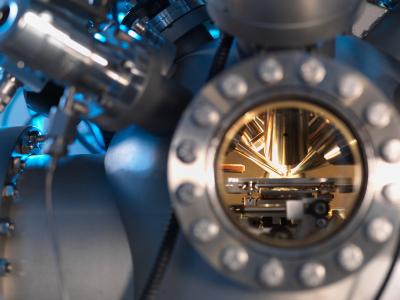Researchers from the UK's National Physical Laboratory (NPL), together with the Samsung Advanced Institute of Technology (SAIT), released a new study to better understand the degradation of blue OLED devices.
Close-up of the OrbiSIMS instrument’s vacuum chamber showing the nozzles of the ion beams and electrode that extract ionised molecules for analysis (Picture credit: NPL)
The OLED degradation mechanisms that limit the lifetime of blue OLED emitters, whether physical, chemical or something else, are still not yet fully understood. Understanding the degradation mechanism of blue OLEDs is essential to improve their performance and stability. The NPL / SAIT team used OrbiSIMS, an innovative mass spectrometry imaging technique invented at NPL in 2017, to study OLED degradation.
The team used OrbiSIMS’ nanoscale mass spectrometry to identify, for the first time, degradation molecules of blue OLEDs with unprecedented sensitivity and localise them with seven nanometres depth resolution within the OLEDs multi-layered architecture. The team found that chemical degradation is mainly related to loss of oxygen in molecules at the interface between emission and electron transport layers. The OrbiSIMS results also showed approximately one order of magnitude increase in the lifetime of OLED devices that use slightly different host materials.
The researchers say that the study's results and the new method can drive future efforts on improving the performance of new blue OLED architectures and help display technology manufacturers to develop better quality displays with longer product lifetimes. The method has already been used in another study led by Samsung and the Korea Advanced Institute of Science & Technology (KAIST), recently published.


